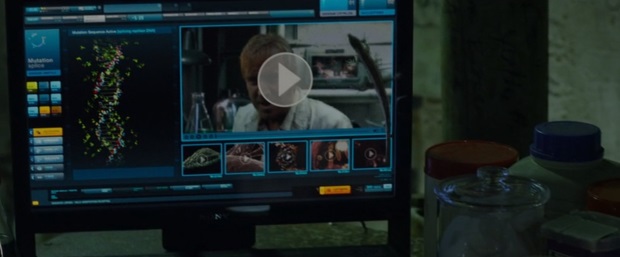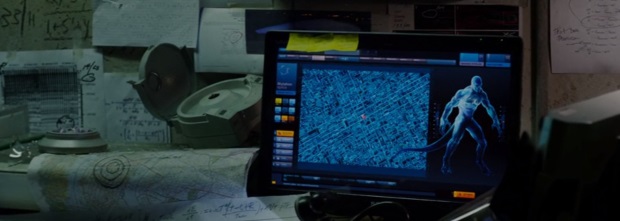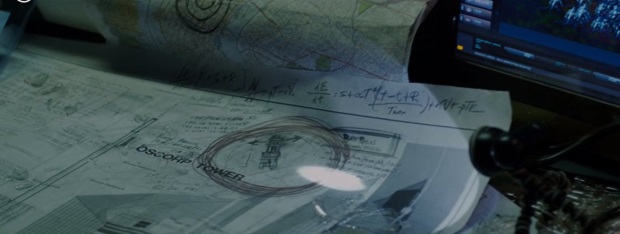The storytelling cheat that’s undermining blockbuster movies
We look at a growing storytelling cheat, that's shortchanging Batman V Superman, The Amazing Spider-Man and Jurassic World: Fallen Kingdom.
This article comes from Den of Geek UK.
Mild spoilers for Batman V Superman, Back To The Future Part II, The Amazing Spider-Man and Jurassic World: Fallen Kingdom lie ahead.
There’s an infamous moment in the peerless Back To The Future Part II, where Christopher Lloyd’s Doc has to explain to Michael J Fox’s Marty McFly why the version of 1985 they’re sat in is so different to the one that they’d left earlier in the film.
The reason, of course, was to do with an Almanac, old Biff, a moment in 1955, and a film pre-empting Donald Trump. But to explain it, the Doc pulls out a chalkboard and draws a diagram. The diagram, of course, is more for us than it is for Marty.
I’ve spoken to a few screenwriters about this scene. Some think it’s a flat out cheat, some think it’s a very economic way to get over a complex piece of information. For me, it never really stuck out, as it struck me as something that Doc would do, and I had no problem with it. But I still think it’s an interesting debate.
It’s also a far sight better than what’s becoming something of a screenwriting go-to in blockbuster movies. And I’m calling it The Convenient Video Clip Plot Moment (TCVCPM for short). In a nutshell, the moment where a key piece of information, or a fresh piece of character motivation, is generated via playing a video clip, that often is conveniently primed and ready in the right place.
The big clanging example of this, for me, is in 2012’s The Amazing Spider-Man. I should confess that this is my least favourite Spider-Man film, and it’s moments like the one I’m about to discuss that hardly help its cause.

With just over half an hour left of the movie, Andrew Garfield’s Spider-Man creeps into the lab of Dr Curt Connors (aka the Lizard), with the film’s story at this stage needing to fill him in on just what’s happening. He looks around the lab, and in a matter of seconds, spies a computer screen. One with no power save by the looks of it, but also, with a video on pause. Conveniently in exactly the right place to gain the necessary piece of exposition to progress the story. Spidey taps the space bar on the Sony Vaio laptop (never miss a product placement beat, these Spider-Man films), and there plays a video of Connors explaining how he’s tried to create a world without weakness. Ranting about how weak humans are. Why be humans at all when we can be strong, faster, Connors questions?
Just in case Spidey isn’t getting the message, incidentally – and lord, this is hardly Poirot’s trickiest case, is it? – another monitor screen is showing blueprints of something, and in front of said screen is a physical map, with the absolute target for what’s coming circled.


On the one hand, all this saves a good ten minutes of screen time, and proper storytelling. On the other, it’s just groan-inducing. It smacks of having no idea how to get out of a storytelling box in good time, and going for the least plausible, least convincing, fastest solution. Hey, we’ve got a big finale to get to! Let’s just bash through this bit!
Unfortunately, other screenwriters didn’t look at that scene and make a mental note to avoid doing something similar. And the next high profile example? That’d be Batman V Superman: Dawn Of Justice, a film with 150 minutes of running time to get through everything. But also one charged with introducing the Justice League collection of heroes.
It’s inevitable to draw a Marvel comparison. Think how carefully Marvel Studios – whatever you think of its characters, and wherever you’re aligned – introduced its characters, built them up, and teased the idea of an Avengers team-up over the course of several films. How, then, would Warner Bros introduce the idea of a Justice League team-up, when it was working to a far tighter timescale? Let’s go with ‘not well’.
The onus is put on Gal Gadot, a year before Wonder Woman would actually give her some quality material to work with. Her Diana Prince is watching footage of chaos in Metropolis, and she duly sits at her (non-Sony) laptop. But what’s this? An email from Bruce Wayne arrives in her inbox. And that email has attachments.
Surely they’re not going to do it this way, the audience questions? Surely they’re not going to introduce the core Justice League team by getting someone to watch videos on a laptop? Surely they’re not going to shortchange us on character development, on build up, on establishing kinship? Surely they won’t try and establish a cinematic universe using some icons and some clips? They wouldn’t, would they? Would they?
Would they?
It’s not good, is it?
The latest film to employ a TCVCPM, without going spoiler-heavy, is Jurassic World: Fallen Kingdom, and it’s such a disappointment to see. That, in the case of that film, a character makes a huge life-changing decision, off the back of watching a video clip.
I’m no screenwriter, and I’m loathed to be one of those people who tells people who are very good at making films how to make them better. But I am a paying customer, and I would ask that the TCVCPM be retired now. I’ve just used a few examples here, and it’s not entirely the domain of blockbuster films. But it is increasingly a loud, clanging signal that the writers have closed themselves into a corner and need a quick way out. At best, it induces a slight wince, at worst, it just undermines the film.
I suspect that were Back To The Future Part II made today – at least I like to think this – that the Doc would still reach for the chalk and board, because that’s the character that had been established. The work had been put in to make it believable. I also believe that had Batman V Superman come along 30 years earlier, the option of a quick video clip to introduce four major new characters would have been laughed off, before everyone nipped off for lunch.
May the TCVCPM be thus consigned to its rightful place.